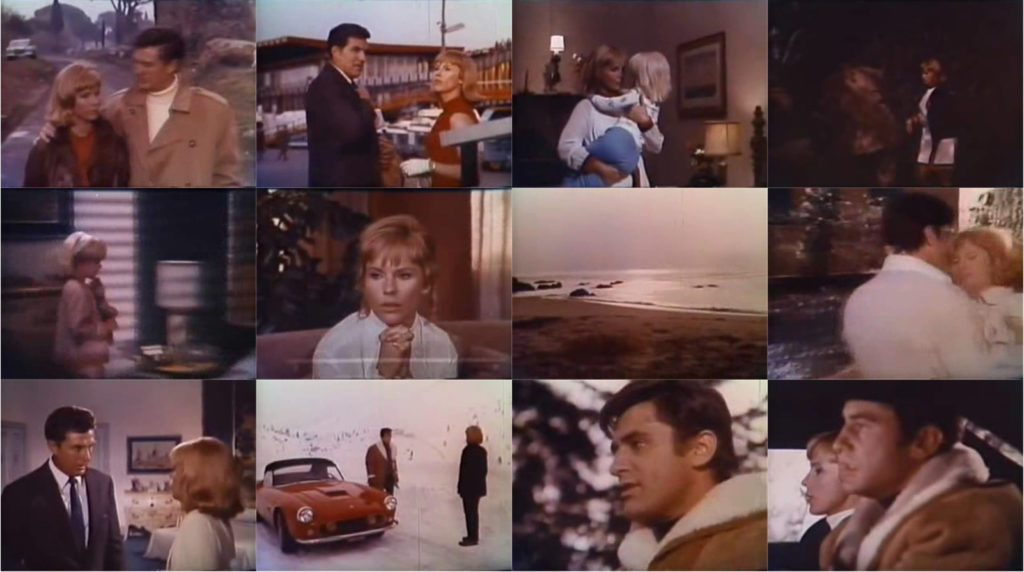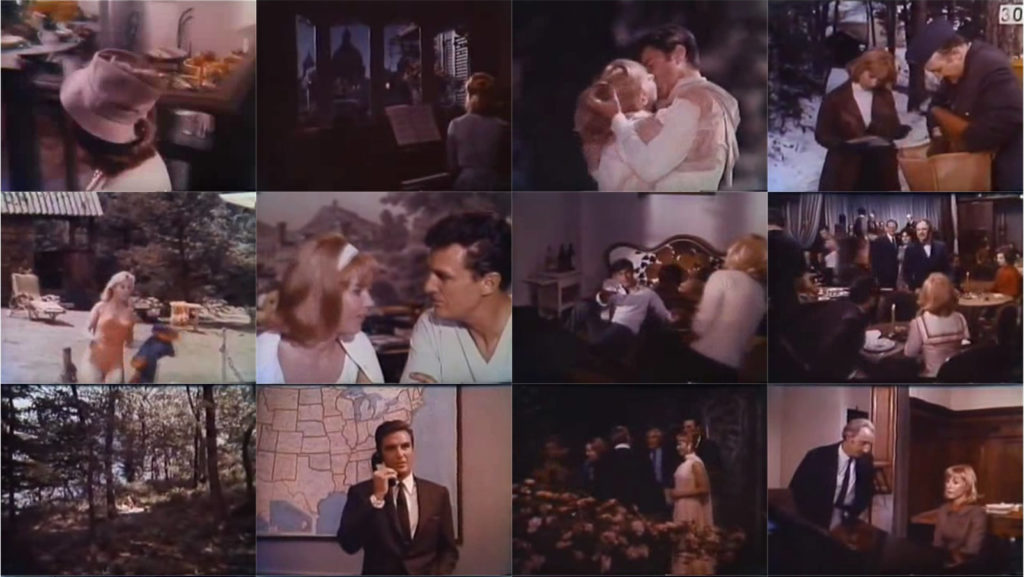Bibi Andersson Cannot Silenzio Bruno
DIRECTED BY LEONARDO BERCOVICI/1970
BLU-RAY STREET DATE; SEPTEMBER 28, 2021/CODE RED (VIA KINO LORBER)

In the early 1960s Rome of the Pixar film Luca, the characters invoke the phrase “silenzio Bruno!” to shut down their self-defeating thoughts. In their case, there is no “Bruno”; the name is merely a mental construct that enables the protagonists to admonish their angst. But what if Bruno was a real person? For Karin Ullman, a Swedish woman living in Rome in 1963, her Bruno is very much flesh and blood. And try as she might, she just can’t silenzio Bruno.
A not-so-hot tip: When you’re a movie character and your meet cute is via a car accident, consider it a harbinger of the relationship to come. All too often, such silver screen guys and gals end up making lunch dates when they should be exchanging insurance information and then moving on.
Yet, when Karin (Bibi Andersson) meets Bruno (James Farentino), proverbial sparks fly rather than real ones. On more than one occasion, we are witness to writer/producer/director Leonardo Bercovici’s innate talent at depicting a vehicular wreck without damaging the actual vehicle. In the quick course of close-up/camera lurch/quick fade to white, lives change forever. If the glaring artifice of the circumstance depicted isn’t enough to give viewers pause about what comes next, then surely the contrivance of it all will. (to be fair, the director does eventually allow a very nice car to be destroyed in high flying style).
Per the throwaway title, this is the story of a woman. But it could just as easily (and more specifically) be thought of as “A Sorry Woman”. Karin, our approaching-middle-aged heroine, is very sorry at the very beginning after her car hits Bruno’s. Likewise, she’s even more sorry near the end that she’s hurt her husband David (Robert Stack).

Which is where the entirely average story brings us. Karin is a woman in love with two men. She, in her heart of hearts, considers Bruno (the car accident guy) the true love of her life. But when it turns out that he’s been married all along, things fall apart. Karin is heartbroken but (finally) moves on. That’s just the first twenty minutes.
Once Karin meets and marries David, a high-ranking U.S. diplomat, things slow down- both for her- and for the movie. Due to the traveling necessary for David’s job, Story of a Woman (Storia di una donna) gets to show off picturesque glimpses of Rome, Cortina and Stockholm, where it was shot on location. Even still, much of the film feels studio-bound, almost in a no-frills made-for-TV-movie kind of way. This may be an international Universal production with a solid music score by a pre-Star Wars John Williams and wardrobe by the great Edith Head, but Story of a Womanmanages to entirely lack scope.
Worse, it lacks momentum. Once Bruno is inevitably back in the picture and Karin is torn between him and her husband, things pick up- but that’s not until the one-hour mark. Ingmar Bergman favorite Bibi Andersson (Persona, Wild Strawberries) carries the melodrama pretty well, but it’s really Robert Stack who impresses the most. The distinctly voiced actor runs the gamut between sweetly tender and frighteningly intense, and completely pulls off both extremes. As for Farentino… he comes off as a bit of an ineffectual dork. But still, Andersson’s skill is such that her love for his character is never doubted.

Code Red has done a remarkable job in presenting. The picture looks pristine the whole way through, and sound quality is very good. At only one point did characters speak in a foreign language long enough to make it seem as though English subtitles might be missing. But it’s more likely that such subtitles were never there in the first place. (The disc does include optional English captions for the hard of hearing). Aside from an assortment of trailers for current Code Red releases, there are no other extras. Which is fine.
Despite its stronger points, Story of a Woman is just another story, the film’s primary value as an artifact. Though it’s rated R and hails from a moment of major changes in the film industry, it opts not to partake in most of the new freedoms that were on the table. (For what it’s worth, the film would be an easy PG-13 today). With the most minor of tweaks, Story of a Woman could’ve been made in the repressed Hollywood of the 1940 and ‘50s. Perhaps that is why, unlike Bruno of this movie, Story of a Woman has been culturally silenzio-ed. For anyone looking to take this obscure trip to Italy (and elsewhere) circa 1970, Code Red has given the green light.


